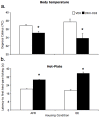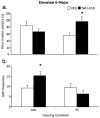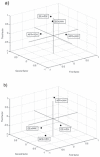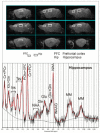The Directive 2010/63/EU on animal experimentation may skew the conclusions of pharmacological and behavioural studies
- PMID: 23924859
- PMCID: PMC3737502
- DOI: 10.1038/srep02380
The Directive 2010/63/EU on animal experimentation may skew the conclusions of pharmacological and behavioural studies
Abstract
All laboratory animals shall be provided some form of environmental enrichment (EE) in the nearest future (Directive 2010/63/EU). Displacing standard housing with EE entails the possibility that data obtained under traditional housing may be reconsidered. Specifically, while EE often contrasts the abnormalities of consolidated disease models, it also indirectly demonstrates that their validity depends on housing conditions. We mimicked a situation in which the consequences of a novel pharmacological compound were addressed before and after the adoption of the Directive. We sub-chronically exposed standard- or EE-reared adolescent CD1 mice (postnatal days 23-33) to the synthetic compound JWH-018, and evaluated its short- and long-term potential cannabinoid properties on: weight gain, locomotion, analgesia, motor coordination, body temperature, brain metabolism ((1)H MRI/MRS), anxiety- and depressive-related behaviours. While several parameters are modulated by JWH-018 independently of housing, other effects are environmentally mediated. The transition from standard housing to EE shall be carefully monitored.
Figures








References
-
- Wolfer D. P. et al. Laboratory animal welfare: cage enrichment and mouse behaviour. Nature 432, 821–822 (2004). - PubMed
-
- Fox C., Merali Z. & Harrison C. Therapeutic and protective effect of environmental enrichment against psychogenic and neurogenic stress. Behav. Brain Res. 175, 1–8 (2006). - PubMed
-
- Fernandez-Teruel A. et al. Early-life handling stimulation and environmental enrichment: are some of their effects mediated by similar neural mechanisms? Pharmacol. Biochem. Behav. 73, 233–245 (2002). - PubMed
Publication types
MeSH terms
Substances
LinkOut - more resources
Full Text Sources
Other Literature Sources

